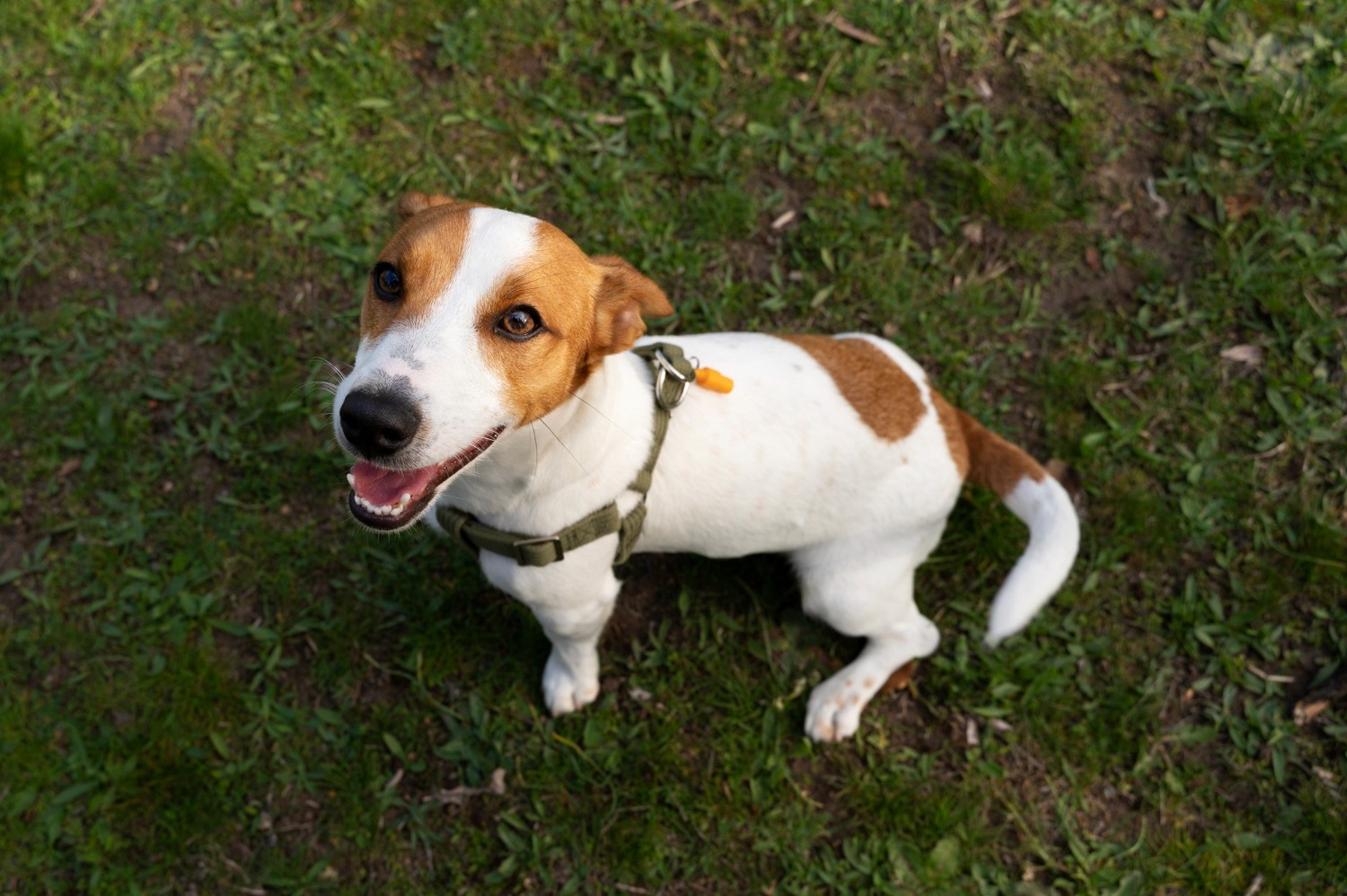Dogs
Sep 2, 2022
Dog body language consists of various methods for communicating emotions and intentions. It may differ significantly from how humans communicate. Barks, whines, and growls are common forms of canine communication. Dogs, on the other hand, frequently rely on nonverbal body language. This can lead to a lot of human-dog miscommunication. Understanding what your dog is saying can provide helpful information, such as when your dog is agitated and nervous about what is going on or when your dog is tense and ready to snap at someone. You must examine the dog’s face and entire body. Learn how to read dog body language to better communicate with your canine companion.
Tail Wagging

Tail wagging appears to be a clear body language signal. If a dog’s tail wags, it must be happy, right? Wrong. Look at the speed and direction of the wag and the tail’s position to interpret the dog’s emotions and intentions. The faster the wag, the more excited the dog. Consider those long, slow, side-to-side tail sweeps your dog performs when greeting you — the kind that wags the dog’s entire body. That’s a happy dog. A faster twitch-like wag indicates a higher level of arousal, which may be harmful.
The wag’s direction may also contain hints. A recent study on tail-wagging showed that dogs tend to wag more to the right when they feel optimistic about something, like interacting with their owner. When dogs confronted something negative, their tails wagged more to the left.
Dogs with their tails pointing down to the ground or tucked between their legs feel fear and stress. Dogs who hold their tails up like a flag are confident, if not aggressive.
Barking

Barking is similar to yelling in humans. Your dog is trying to express itself; the only way it can do so is by barking. Dog barks come in different pitches, and while some may be more menacing than others, it is always important to pay attention to a dog’s barking. A continuous rapid bark is frequently an alert. Someone in your dog’s territory may have noticed him. Dogs often vocalize their barks in almost a singing manner. It is not uncommon to find dogs who enjoy singing while you play the piano, telling you how happy they are to see you when you get home, or telling you how much they enjoy playing with you. This type of vocalization is simply a way for them to communicate that they are in a good mood.
Whining

Whining is a complex voice to recognize. Whining may be a dog’s way of “asking” for something, such as attention or dinnertime. A dog may be excited or energized. Other dogs whine in response to stress. A dog that is injured or ill may whine to express its discomfort. It’s essential to look for other indicators, as with many other dog body language cues, to determine why your dog is whining. As you spend more time with your dog, you’ll notice different whining types. When combined with body cues, some dogs will whine to get your attention because you’re not paying attention to them. Other dogs may whine and sit by the backdoor to let you know they must go potty.
Facial Expressions

Dogs have facial features similar to humans but do not use them the same way. Think about yawning. Dogs yawn when they are stressed, whereas people yawn when they are tired or bored. Dogs can “catch” yawns in the same way that people can. Lip-licking is another example of dog body language that many people misinterpret. Dogs, like humans, will lick their lips after a delicious meal, but they will also do so when they are nervous. The tongue flick is sometimes so quick that it’s difficult to notice. Your dog isn’t expressing a desire to lick your face but rather dissatisfaction with a particular situation. Smiling is the most perplexing facial expression. Usually, when dogs bare their teeth, it serves as a warning, as if they’re saying, “Look at my weapons.” Smiling dogs also show their front teeth, but the meaning is entirely different. This expression, also known as a submissive grin, is frequently seen on a happy dog with a loose and wiggly posture. The dog’s general demeanor says, “Hello, I come in peace.”
Posture

The weight distribution of a dog can reveal a lot about its mood and intent. A dog hunched to the ground indicates stress. A dog in the opposite posture has their weight shifted forward, suggest the dog is attempting to approach something. This could simply be the dog’s interest. But it could also indicate offensive intentions, particularly paired with other aggressive body language cues like a twitching tail held high. In this instance, the dog is attempting to appear more prominent.
Eyes

Soft eyes have open lids and appear to be squinting at times. They indicate that the dog is content or happy. The polar opposite is hard eyes, in which the eyes appear to become cold. These are signs of a negative state of mind, and you’ll recognize them when you see them. The dog could be protecting a toy or acting aggressively. A hard stare, in which the dog looks intently at something for an extended time, usually indicates a threat. Eye contact is an essential signal for dogs. Looking away is meant to calm a situation, just as a hard stare can be a precursor to aggression. When stressed, dogs will look away and avoid making eye contact. People often interpret this as their dog ignoring them or being stubborn, but the dog expresses discomfort.
None of these dog body language signals are effective on their own. They are all a part of the same package. When reading a dog’s communication, pay attention to every signal the dog uses, from tail height to eye shape. Your dog is constantly “talking” to you. You will develop a stronger bond of trust and respect if you learn what your dog says. Furthermore, your newfound understanding of your dog’s emotional state will allow you to predict his behavior and prevent problems before they arise.





